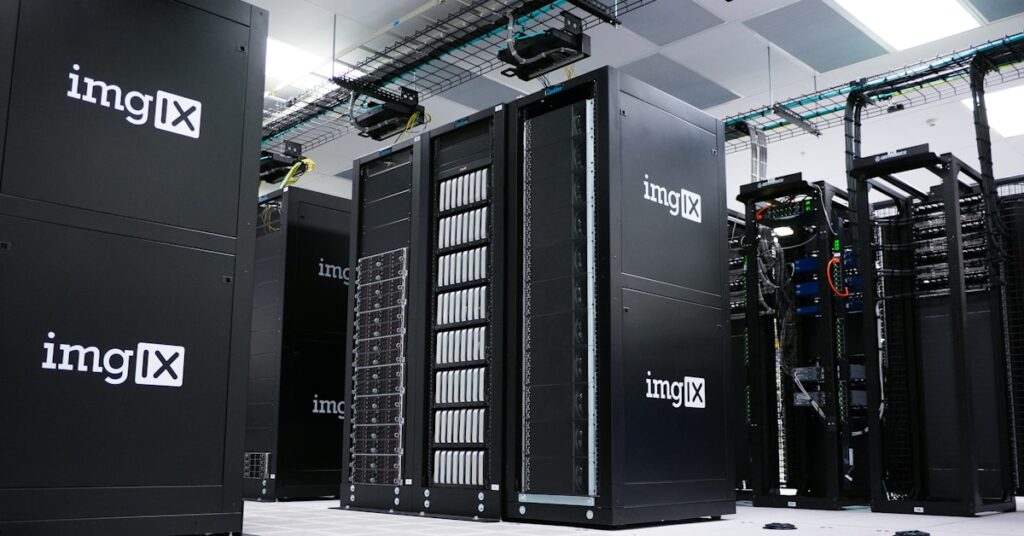Data everywhere, but insights nowhere?
Your current systems can’t keep up, creating bottlenecks that halt progress. Valuable information gets trapped, unavailable for real-time analysis when you need it most.
The pressure to deliver results is intense, but choosing the wrong tool wastes budget and risks missed reporting goals, setting your entire team back.
This isn’t just your problem; it’s a widespread reality. According to Forrester, an incredible 60-73% of enterprise data goes unused for analytics. You’re likely sitting on a goldmine of insights.
But navigating the crowded market to find the right tool feels impossible. This guide will simplify your decision-making process.
While we’re discussing harnessing data, my article on best marketing analytics tools offers deeper insights into boosting ROI.
In this article, I’ll guide you through the best big data tools. We’ll focus on what truly solves your biggest challenges and delivers actionable insights.
You’ll find scalable solutions that integrate with your infrastructure and finally unleash the actionable insights your business needs to grow.
Let’s dive right in.
Quick Summary:
| # | Software | Rating | Best For |
|---|---|---|---|
| 1 | Domo → | Data analysts & IT leads | |
| 2 | Apache Hadoop → | Large-scale enterprises | |
| 3 | Apache Spark → | Data science teams | |
| 4 | Google BigQuery → | Enterprise AI-driven analytics | |
| 5 | Power BI → | Midsize to large enterprises |
1. Domo
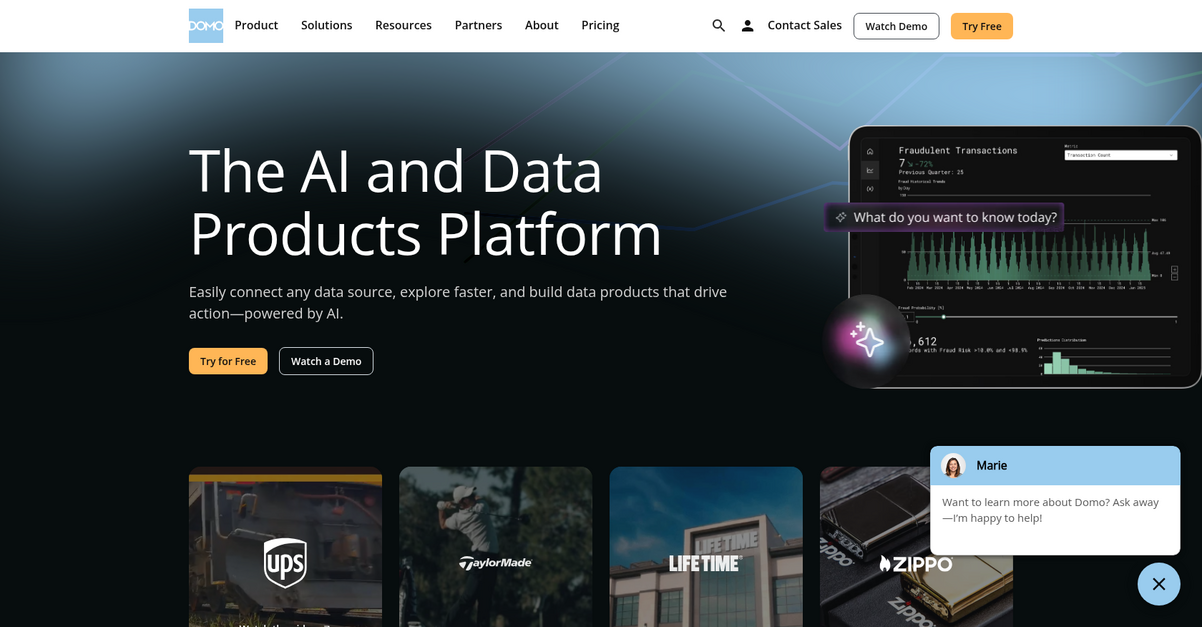
Struggling with data overload and slow insights?
Domo offers an AI and data products platform, empowering you to connect and prepare data from any source. This means you can expand data access for exploration and build powerful data products.
You can drive innovation and impact with AI assistance at every step, helping you navigate increased data diversity and achieve desired outcomes like actionable business insights. This helps tackle legacy system bottlenecks.
Here’s how Domo solves those pain points.
Domo integrates your data, allowing you to centralize and prepare it with ease. You can leverage powerful ETL capabilities to transform your data, either within your cloud data warehouse or directly in Domo.
This ensures your data stays where you want it, providing seamless integration with existing infrastructure. Domo also extends the reach of your insights by enabling you to build impactful visualizations, interactive apps, and shareable data products. Additionally, these are all enhanced by AI, which you can deliver to your teams and customers. Domo’s automation capabilities are built into the platform, empowering you to streamline operations, reduce errors, and focus on high-impact priorities, yielding measurable ROI and long-term scalability.
You can then discover and share insights instantly, anywhere.
Key features:
- Data Integration: Connects, centralizes, and prepares data from any source using powerful ETL capabilities and numerous connectors like Salesforce, SAP, and Excel.
- Business Intelligence: Enables instant discovery and sharing of insights through robust charts, dashboards, and embedded analytics for visualizing your data.
- Intelligent Automation & AI: Utilizes secure AI agents and no-code workflows to automate tasks, assist with forecasting, and deliver personalized insights, maximizing productivity.
Domo features, pricing, & alternatives →
Verdict: Domo stands out as one of the best Big Data Tools for tackling data diversity and bottlenecks, offering a comprehensive platform for integration, AI-powered analytics, and automation. Its capabilities enable data analysts and IT leads to achieve reliable adoption and optimal efficiency, evidenced by customers saving hundreds of hours on manual processes.
2. Apache Hadoop
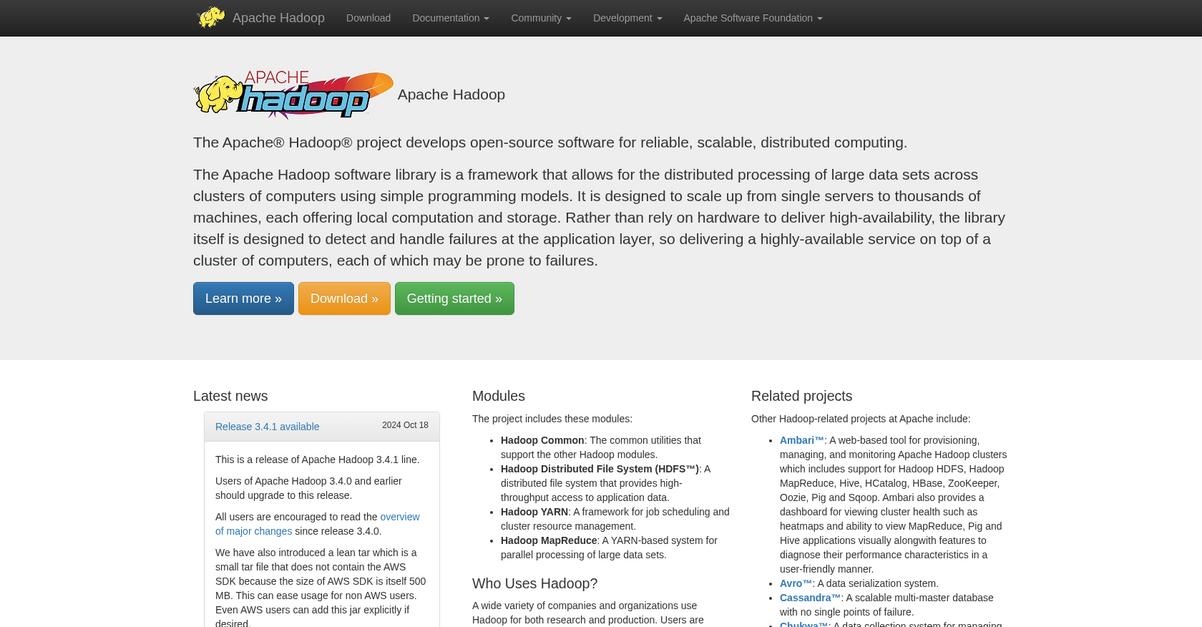
Struggling with data bottlenecks and delayed insights?
Apache Hadoop offers a robust framework for distributed processing of large datasets, ideal for overcoming your legacy system limitations. This means you can handle increasing data diversity without sacrificing performance.
Hadoop enables distributed computing across thousands of machines, allowing you to scale up efficiently and address growing data demands for your organization. Here’s how you can transform your data strategy.
This framework allows for the distributed processing of large data sets across clusters of computers using simple programming models. It is designed to scale up from single servers to thousands of machines, each offering local computation and storage.
Plus, Apache Hadoop’s library is designed to detect and handle failures at the application layer, ensuring a highly-available service even with individual machine failures. This capability minimizes disruptions, providing the reliability you need for critical analytics. Additionally, modules like Hadoop YARN handle job scheduling and resource management, while Hadoop MapReduce offers parallel processing, giving you comprehensive control and efficiency.
The result is actionable business insights and optimal efficiency.
While discussing big data processing, efficiently preparing your data is crucial. My guide on best data mapping software can help streamline your integration challenges.
Key features:
- Scalable Distributed Processing: Handles large data sets across thousands of machines, enabling your team to overcome bottlenecks and process diverse data efficiently.
- High-Availability Service: Detects and manages failures at the application layer, ensuring continuous operation and reliable access to your critical data, reducing downtime risks.
- Comprehensive Modules: Includes HDFS for high-throughput data access, YARN for resource management, and MapReduce for parallel processing, supporting end-to-end data workflows.
Apache Hadoop features, pricing, & alternatives →
Verdict: Apache Hadoop stands out as one of the best Big Data Tools for tackling large-scale data processing due to its scalable distributed computing and built-in fault tolerance. Your organization can achieve reliable adoption, measurable ROI, and long-term scalability, enabling your teams to execute advanced analytics with minimal disruption.
3. Apache Spark

Struggling with data bottlenecks and slow insights?
Apache Spark offers a unified engine specifically designed for large-scale data analytics, addressing your need for speed.
This means you can unify processing of batch and real-time streaming data, eliminating the lag that hinders critical business decisions.
It’s time to unleash your data’s potential.
Apache Spark is a multi-language engine for executing data engineering, data science, and machine learning on single-node machines or clusters. It offers capabilities to handle both batch and streaming data, allowing you to process information as it arrives.
You can perform exploratory data analysis on petabyte-scale data without downsampling, enabling comprehensive insights. Apache Spark integrates with your favorite frameworks, helping to scale them to thousands of machines, which is crucial for modern, data-intensive workloads. This means your existing infrastructure can leverage Spark’s power without a complete overhaul, ensuring a smooth transition.
Additionally, you can train machine learning algorithms on a laptop and use the same code to scale to fault-tolerant clusters of thousands of machines, ensuring your advanced analytics are always powered by the latest data.
While we’re discussing leveraging data for insights, you might also find my guide on best student information system helpful for unlocking educational data.
Gain insights, conquer bottlenecks.
Key features:
- Batch/streaming data processing: Unify your data processing in batches and real-time streaming, using your preferred language like Python, SQL, Scala, Java, or R for flexibility.
- Data science at scale: Perform Exploratory Data Analysis (EDA) on petabyte-scale data without downsampling, giving you complete and accurate insights for better decisions.
- Machine learning capabilities: Train machine learning algorithms on a laptop and then effortlessly scale the same code to fault-tolerant clusters, ensuring robust analytics.
Apache Spark features, pricing, & alternatives →
Verdict: Apache Spark stands out as one of the best Big Data Tools for its unified engine, which tackles bottlenecks by processing both batch and real-time streaming data. Its ability to scale machine learning and perform petabyte-scale data science makes it ideal for achieving fast, actionable business insights and measurable ROI.
4. Google BigQuery
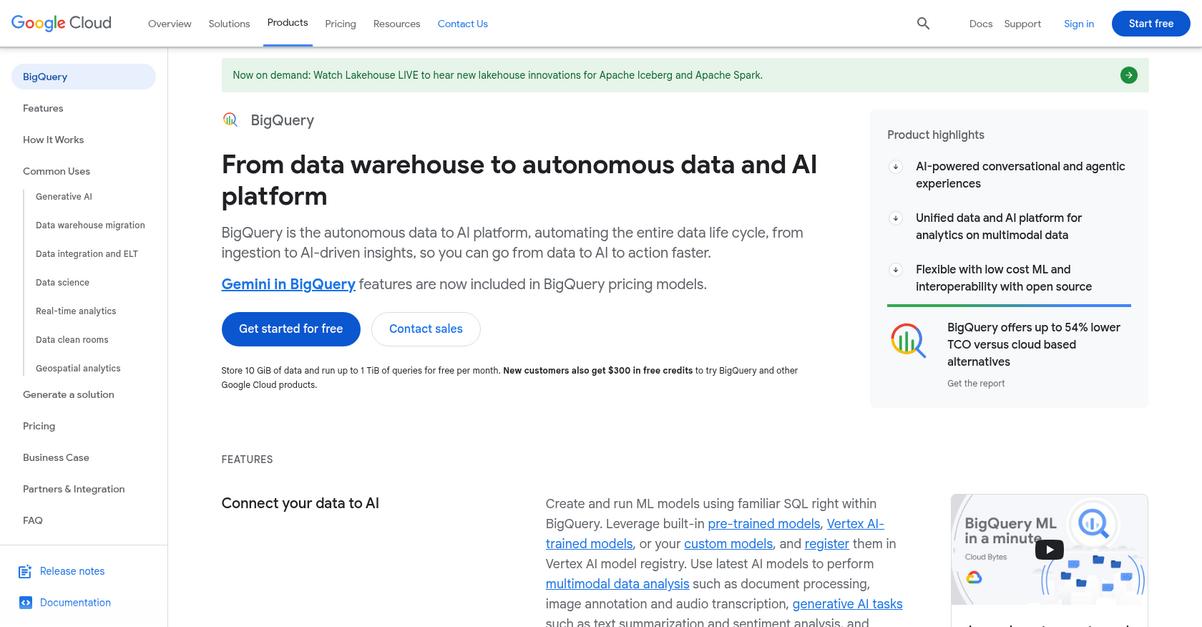
Are your existing systems holding back real-time insights?
Google BigQuery offers an autonomous data to AI platform that automates the entire data lifecycle. This means you can swiftly move from raw data to AI-driven insights and action, accelerating your team’s analytical capabilities. Your ability to leverage multimodal data for analytics will transform. Here’s how to streamline operations.
BigQuery is built for enterprise scale, enabling petabyte-scale analysis while optimizing costs through decoupled storage and compute, compressed storage, and autoscaling.
Google BigQuery helps you unify your data and connect it directly with groundbreaking AI. You can create and run ML models using familiar SQL, integrating pre-trained, Vertex AI-trained, or custom models. This flexibility supports advanced multimodal data analysis, including image annotation and sentiment analysis. Additionally, Gemini in BigQuery provides AI-powered conversational and agentic experiences, automating data preparation, error detection, and transformations. The result is faster, smarter business decisions.
Key features:
- AI-powered insights from conversational and agentic experiences, transforming data processing into natural language queries for quicker analysis.
- Unified data and AI platform seamlessly integrates diverse data types, allowing for advanced analytics on multimodal data, including images and text.
- Flexible with low cost ML and interoperability with open source tools, enabling you to build and run machine learning models directly within the platform using familiar SQL.
Google BigQuery features, pricing, & alternatives →
Verdict: Google BigQuery stands out among the best big data tools for its AI-powered automation and unified platform capabilities. With features like real-time analytics, flexible ML integration, and enterprise-scale efficiency, it delivers actionable insights faster, reducing total cost of ownership by up to 54% compared to alternatives.
5. Power BI
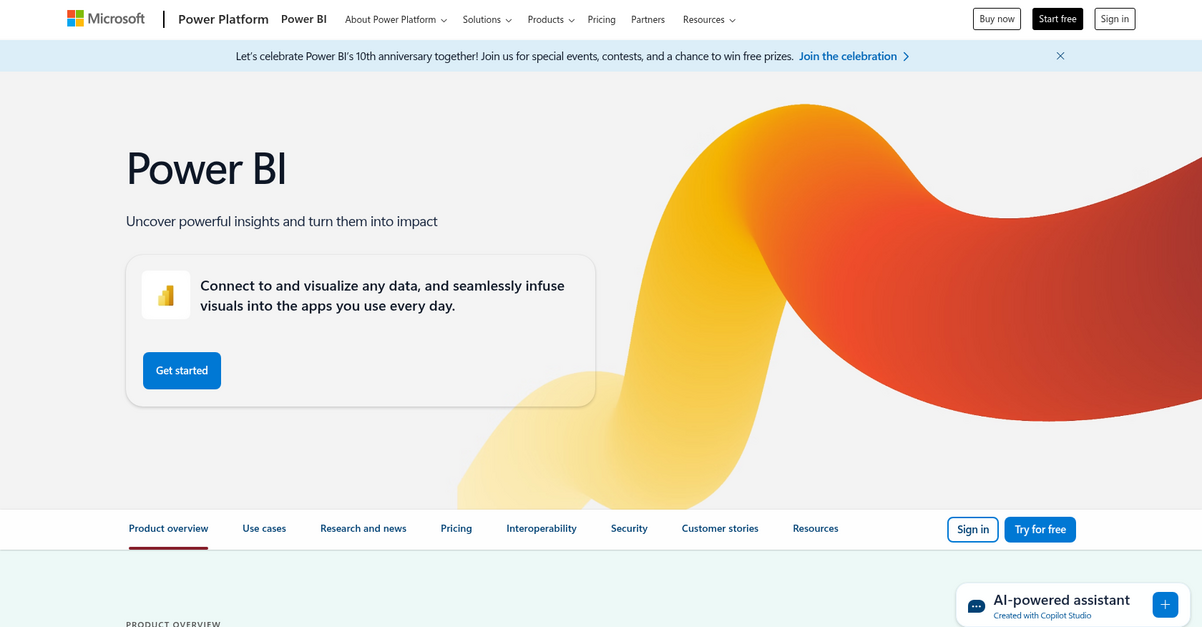
Struggling to make sense of your overwhelming data?
Power BI helps you uncover powerful insights and infuse visuals into your daily apps. This means you can connect to and visualize any data, turning complex information into actionable intelligence.
You’ll find it simpler to manage diverse data sources, reducing the frustration of fragmented information, because Power BI creates a unified source of truth for your data.
Here’s how you can gain clarity.
Power BI creates a data-driven culture by allowing you to easily connect, model, and visualize data from any source. This capability helps your team overcome bottlenecks and leverage the full potential of your data assets.
The platform includes advanced data analysis tools and AI capabilities, enabling you to turn raw data into intuitive visuals and meaningful reports. Additionally, it allows you to embed and share reports within Microsoft 365 services like Teams, PowerPoint, and Excel, ensuring insights reach those who need them most. You can also quickly create and tailor reports using conversational language, simplifying your analysis process.
The result is better, faster business decisions.
While we’re discussing comprehensive data solutions, you might also find my guide on customer database software insightful for managing customer information.
Key features:
- Unified Data Hub: Connect disparate data sources to OneLake, establishing a single, governed source of truth to reduce duplication and enable data mesh.
- AI-Powered Insights: Leverage easy-to-use AI features to find patterns, instantly create reports, and get answers to your data questions using conversational language.
- Seamless Integration: Infuse visuals and share reports across Microsoft 365, Power Platform, Azure, and Dynamics 365 to empower users within their everyday apps.
Power BI features, pricing, & alternatives →
Verdict: Power BI stands out as one of the best big data tools for midsize to large enterprises, offering robust capabilities for unifying, analyzing, and visualizing data. With its strong AI features, seamless Microsoft ecosystem integration, and proven ROI (321% over 3 years in a Forrester study), it helps your organization conquer bottlenecks and unleash actionable insights.
6. Tableau

Struggling with data overload and slow insights?
Tableau helps you turn trusted data into autonomous action, anytime and anywhere, with its agentic analytics platform. This means you can easily see, understand, and act on your data.
Your organization can transform how you use data to solve problems, making you more data-driven. This is how you fuel faster data, insights, and action with Tableau Next.
It’s time to unleash your data’s full potential.
Tableau unlocks trusted insights for everyone, integrating with Agentforce and built on Salesforce. You can accelerate data-driven decisions with a trusted AI assistant that breezes through data preparation and creates visualizations faster with conversational AI.
Additionally, Tableau is the world’s broadest, deepest analytics platform. It allows you to deploy in the cloud or on-premises, and natively integrate with Salesforce CRM, connecting to all your data. Plus, it provides intuitive products that focus on asking questions rather than learning software, offering limitless data exploration. The result is increased efficiency for business leaders and trusted data with governance for IT leaders.
Before diving deeper, you might find my analysis of best test maker software helpful for robust assessments.
Key features:
- Agentic Analytics Platform: Fuels faster data, insights, and action by turning trusted insights into autonomous action, anytime and anywhere.
- Trusted AI Assistant: Accelerates data-driven decisions by making data preparation and visualization faster through conversational AI.
- Broadest Analytics Platform: Connects to all your data, deploys in the cloud or on-premises, and integrates with Salesforce CRM for comprehensive insights.
Tableau features, pricing, & alternatives →
Verdict: Tableau stands out among the best big data tools for its ability to deliver trusted, AI-powered insights. Its agentic analytics platform and conversational AI assistant empower data analysts, IT leaders, and business leaders to tackle bottlenecks, streamline operations, and drive impactful decisions, as demonstrated by KeyBank empowering 10K employees.
7. Qlik
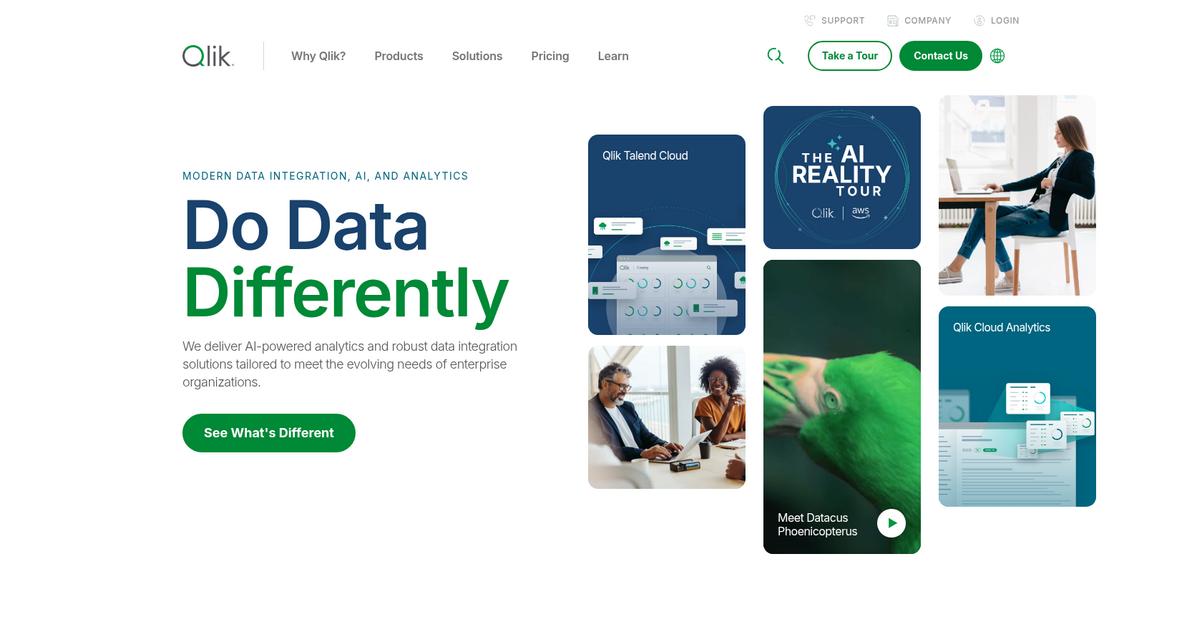
Are your big data projects hitting a wall?
Qlik directly addresses this with its powerful data integration and analytics platform.
This means you can unleash insights from even your most complex data without the usual bottlenecks and fragmented views.
Here’s how you conquer them.
Qlik helps you turn raw data into actionable insights, providing a unified view across diverse sources.
Its associative engine allows you to explore data freely without predefined queries, revealing hidden connections and speeding up discovery. This capability, combined with automated data preparation and real-time analytics, ensures your teams can quickly adapt to new information.
Additionally, Qlik provides governed self-service, empowering business users to generate their own reports and analyses while maintaining data integrity, boosting efficiency and fostering a data-driven culture across your organization.
Before diving deeper, you might find my analysis of best Android data recovery software helpful if data recovery is a concern.
The result: measurable ROI and long-term scalability.
Key features:
- Associative Engine: Enables unrestricted data exploration and discovers hidden insights by connecting all your data points without traditional query limitations.
- Automated Data Preparation: Streamlines the process of readying data for analysis, significantly reducing manual effort and accelerating time to insight for your team.
- Governed Self-Service: Empowers business users with flexible analytics while maintaining strict data governance, ensuring both agility and accuracy in reporting.
Qlik features, pricing, & alternatives →
Verdict: Qlik stands out as one of the best big data tools for organizations aiming to overcome data fragmentation and gain deeper insights. Its unique associative engine and automated data preparation capabilities empower your teams to execute advanced analytics with minimal disruption and optimal efficiency, ensuring reliable adoption and measurable ROI.
Conclusion
Ready to conquer your data bottlenecks?
Choosing the right tool is overwhelming. A wrong move not only wastes your budget but can set your entire data strategy back significantly.
It’s a common struggle. Meetanshi reports that 76% of companies struggle to understand their data. This widespread data management challenge proves that without the right solution, you’re fighting an uphill battle for real insights.
Here’s what I recommend.
After reviewing these top contenders, Domo is the clear winner for your enterprise. It directly tackles data diversity and bottlenecks with its unified, AI-driven platform.
I was especially impressed by customer stories of saving hundreds of hours on manual processes. When you choose one of the best big data tools like Domo, you’re not just buying software; you’re investing in automation and actionable intelligence for your team.
While we’re discussing comprehensive data solutions, understanding how to handle data loss with effective data recovery software is also crucial.
I highly recommend you see it for yourself. Start a free trial of Domo and see how quickly you can turn data into decisions.
Your team will thank you for it.
